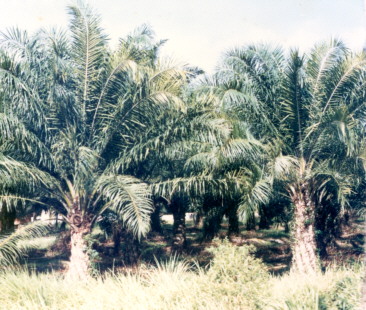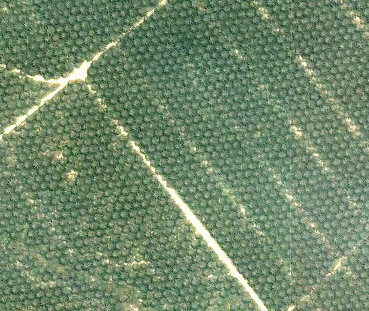 Oil palm trees  Ikonos image of an oil palm plantations Oil palm is an important plantation crop in the tropical regions. In world vegetable oil trade, palm oil is second only to soybean oil. In 1999, world production of palm oil was 20.5 million tons, compared to 24.7 million tons of soybean oil. Oil palm plantation managers are potential users of high-resolution imagery. The Centre for Remote Imaging, Sensing and Processing (CRISP) at the National University of Singapore is currently researching and developing oil palm plantation applications for high-resolution imagery. Counting TreesTo monitor production and assess plantation value, oil palm plantation managers must know how many trees are on their plantations, which range in size from less than 40 hectares to as much as 75,000 hectares. Currently, workers are deployed to the plantations to count trees manually. The cost of manual counting is low, but accuracy is doubtful. One-meter IKONOS imagery offers an attractive census alternative because individual tree crowns are visible, so trees can be counted accurately. CRISP developed an automated technique for detecting and counting trees in IKONOS images based on differential geometry concepts of edge and curvature. A tree crown’s intensity profile normally assumes a dome shape after some degree of smoothing. The curvatures and edges at various resolution scales are computed and used to locate the trees.
This technique has been tested with several scenes of true-color, pan-sharpened IKONOS images. In all tests performed, the technique’s accuracy rate is generally greater than 90%. |

